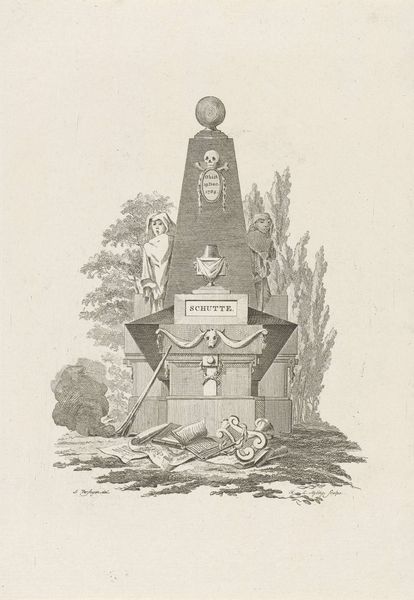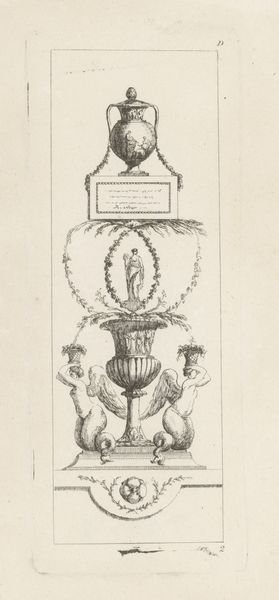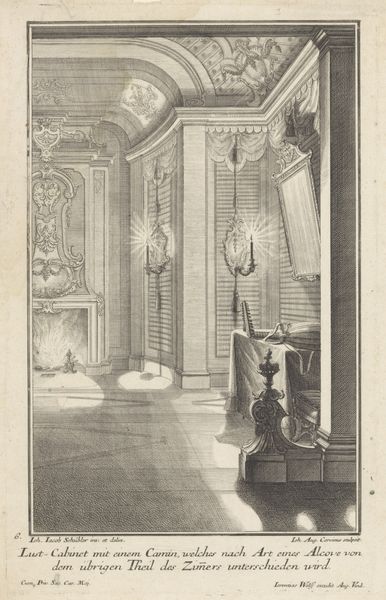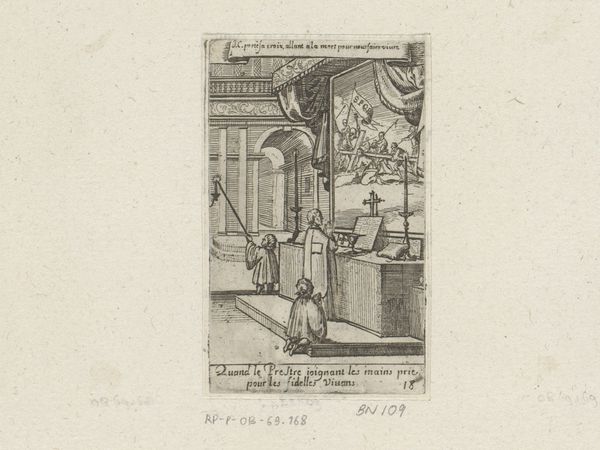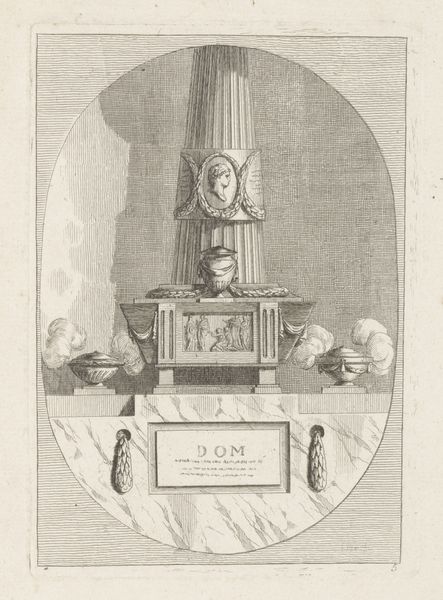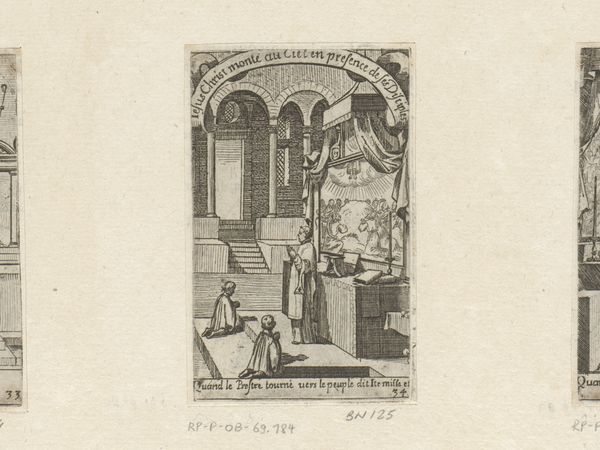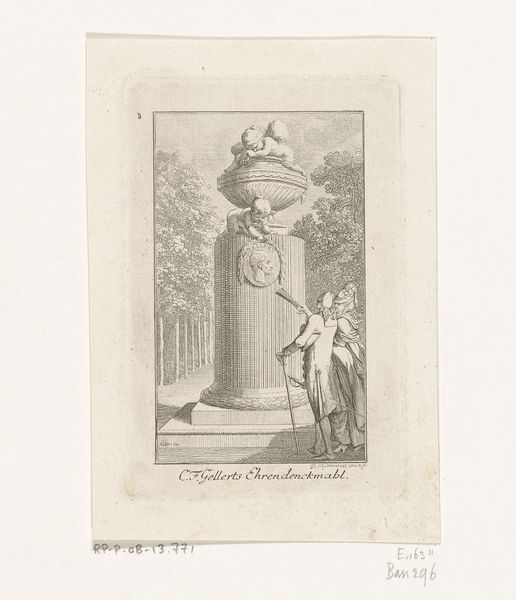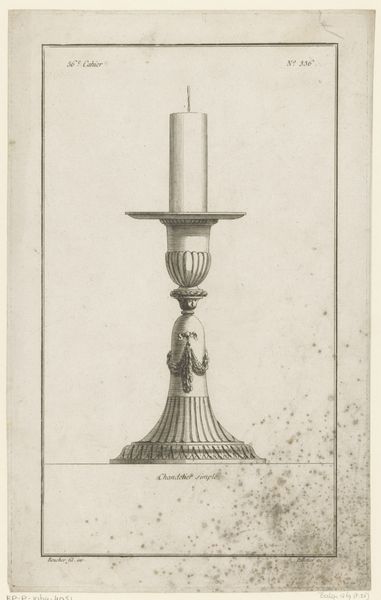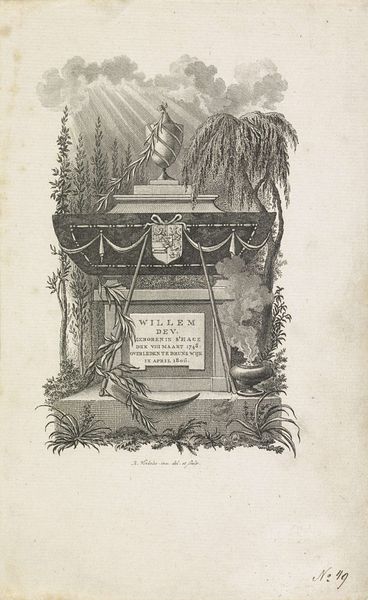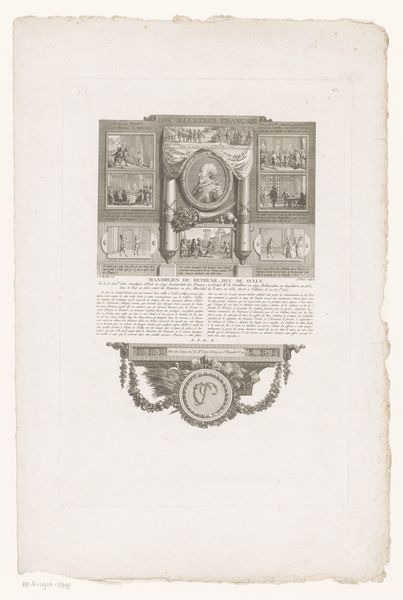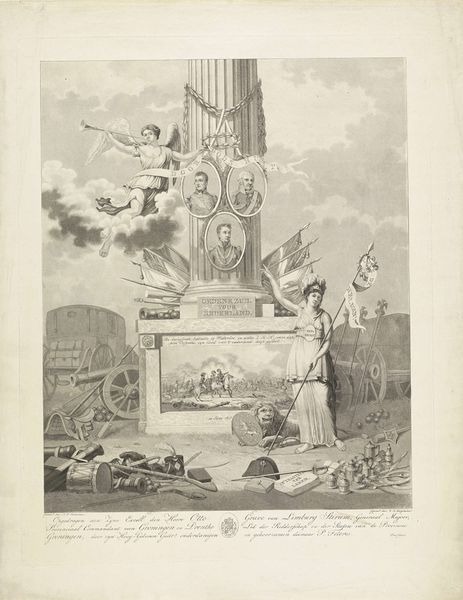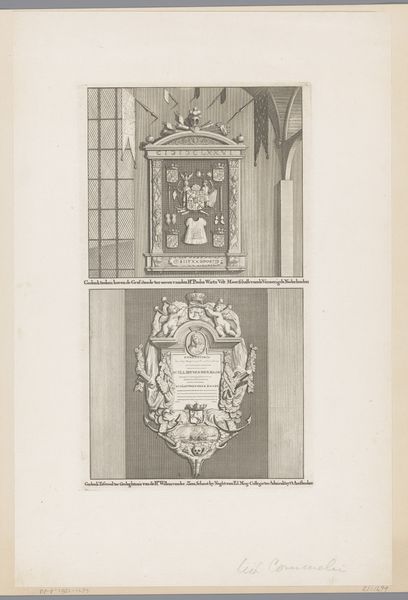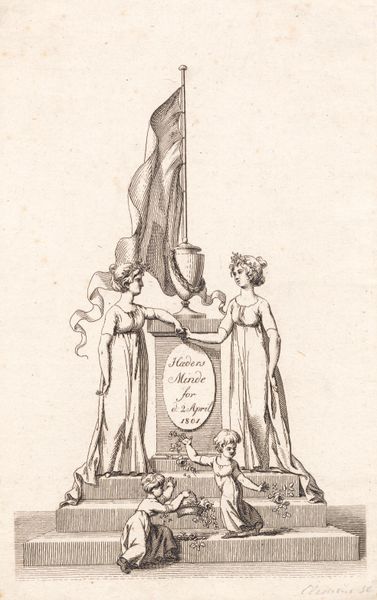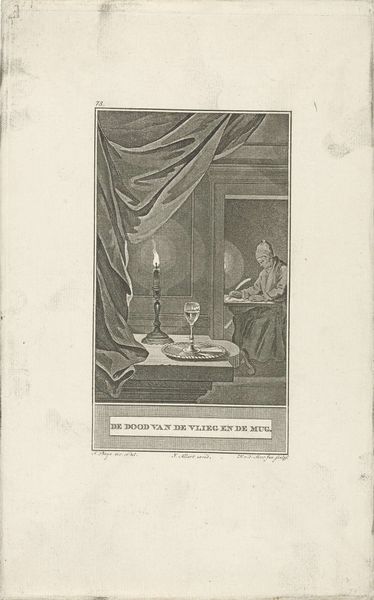
drawing, graphite
#
drawing
#
aged paper
#
quirky sketch
#
caricature
#
old engraving style
#
sketch book
#
personal sketchbook
#
idea generation sketch
#
sketchwork
#
graphite
#
sketchbook drawing
#
storyboard and sketchbook work
#
sketchbook art
Dimensions: height 275 mm, width 215 mm
Copyright: Rijks Museum: Open Domain
Curator: What we're looking at is "Spotprent op de Deltsche Academie," a drawing from 1862 by Johan Michaël Schmidt Crans. It's a quick, evocative sketch in graphite, with the unmistakable charm of aged paper. Editor: It feels immediately melancholic to me. The long, shadowed hallway, the flickering candle...there's a sense of something ending, maybe fading potential? Curator: I'm glad you sensed that. Structurally, Crans uses the perspective of the corridor to focus our gaze on that central candle, a towering form bearing the inscription "Academie Delft." Its melting wax and flame-like form feel almost anthropomorphic. The artist used visual rhetoric to highlight social criticism. Editor: It's a scathing visual critique, right? The names above the doors-- "Simons," "Uhlenbeck"—these were likely figures associated with the academy, their roles represented by the closed doors and the ominous fumes looming over the candle, giving a feeling of closure of this historical moment. There is an implication, or is it just me? Curator: Absolutely, the details carry potent symbolism, this is an intricate satirical commentary about the Academy, capturing tensions between its administrators and teachers. Notice how the flame rising from the "Akademie Delft" forms into these vague smoke-formed buggies driven away. It is rich with semiotic meanings about specific socio-political relationships of the time. Editor: The simplicity is so deceptive. It’s just graphite on paper, but he manages to conjure an entire atmosphere—loss, maybe frustration, a feeling that something important is slipping away. You see that even in the little details, the slightly shaky lines. It is like we catch a little fragment of an anxious reality, an historical pressure point. Curator: And even though it addresses the specific academic circumstances from over a century ago, doesn't it trigger also this sort of an enduring quality that reflects broader shifts of transition, instability, impermanence in institutions more generally? Editor: Totally, an elegy frozen in a moment of artistic expression, offering a timeless quality of an institution on the edge. It is hard not to love a sketch like this, even after the details fade out from public's memories.
Comments
No comments
Be the first to comment and join the conversation on the ultimate creative platform.
